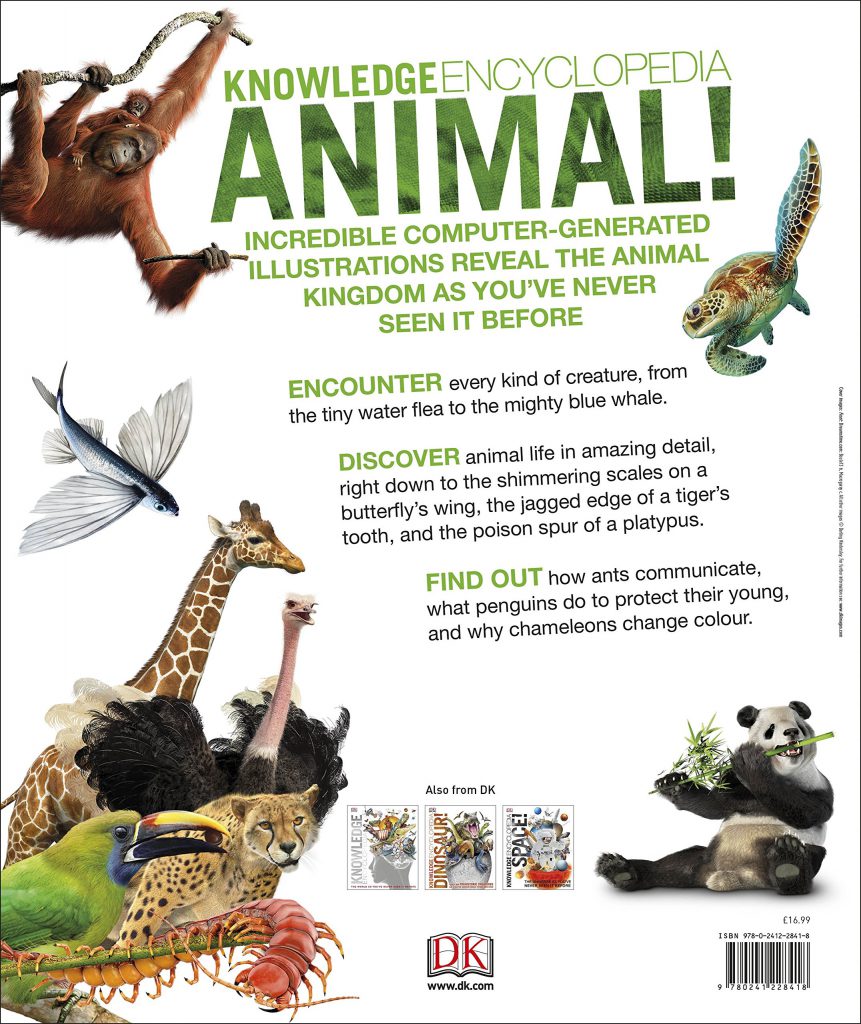
Knowledge Encyclopedia Animal!
Most large land animals are vertebrates. Even large sea animals, such as the whale, are vertebrates. However, only about 5% of all animal species are vertebrates. The remaining 95% of animals are invertebrates that don’t have an internal backbone (e.g., insects, mollusks and arthropods).
The defining characteristic of all vertebrates is the vertebral column or backbone. This vertebral column is a strong series of bones extending through the core of the body. Near the front end of the backbone is the mouth, with the anus opening near the back end of the backbone. In vertebrates with a tail, the vertebral column extends beyond the anus to the end of the tail. Above the backbone is the spinal cord, a major component of the nervous system. Below the backbone is the gastrointestinal or digestive tract.
The vertebral column is made up of many individual vertebrae interconnected with intervertebral discs. These vertebrae and intervertebral discs provide for flexibility and movement of the spine.
Vertebrates include fish, amphibians, reptiles, birds, mammals, primates, rodents and marsupials.
Although vertebrates represent only a very small percentage of all animals, their size and mobility often allow them to dominate their environment.
The 7 living classes of vertebrates are distinguished mostly on the basis of their skeletal system, general environmental adaptation, and reproductive system.
Seven Living Classes of Vertebrates
1.Class Agnatha: (Lamprey and Hagfish)
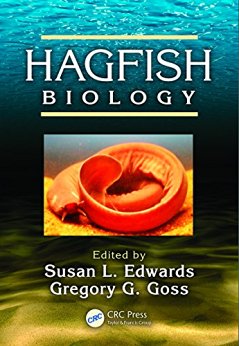
Hagfish Biology (CRC Marine Biology Series)
General Characteristics:
Absence of jaws.
These organisms lack the paired fins (pelvic and pectoral).
Skeleton made of cartilage.
Round eel-like body with a compressed caudal fin.
Soft skin devoid of scales.
They lack a swim bladder and gill covers (operculum).
7 gill slits on each side of the head.
The lamprey are parasitic and the hagfish are scavengers.
Ectothermic ( animals that cannot control their body temperature).
External fertilization. Oviparous ( egg laying)
Marine and fresh water species are found.
Lateral line
Two chambered heart
Gills used for respiration
No external ears
No eye lids
2.Class Chondrichthyes: ( Sharks, Rays, and Skates)
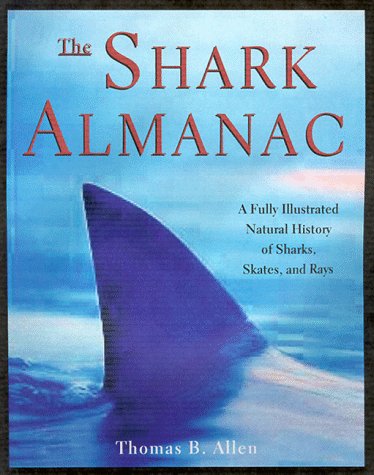
Shark Almanac: A Fully Illustrated Natural History of Sharks, Skates and Rays
General Characteristics:
Skeleton made of cartilage.
Body covered with triangular Placoid scales.
Ventral,subterminal mouth with several rows of triangular teeth.
Large caudal fin with the dorsal section larger than the ventral one.
Paired fins ( pectoral and pelvic), are stiff and nonflexable.
They lack a swim bladder.
Ectothermic
Internal fertilization. Ovoviviparous ( developing egg kept inside the female for protection and does not live off of the parent).
Marine organisms only.
Lateral line
Two chambered heart
Gills used for respiration
No external ears
No eye lids
3.Class Osteichthyes: ( Tuna, Carp, Salmon, and Sturgeons).
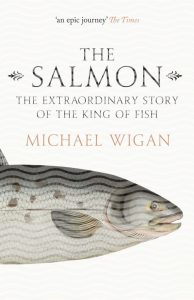
The Salmon: The Extraordinary Story of the King of Fish
General Characteristics:
Skeleton made of bone
Lateral line
Two chambered heart
Operculum covering the gills.
Swim bladder
Ectothermic
Paired fins made of rays and spines,or lobed fins lacking the rays and spines.
Various types of scales (ctenoid,ganoid, or cycloid).
Marine and fresh water species.
Gills used for respiration
External fertilization. Spawning. Oviparous.
No external ears
No eye lids.
4.Class Amphibia:Amphibians
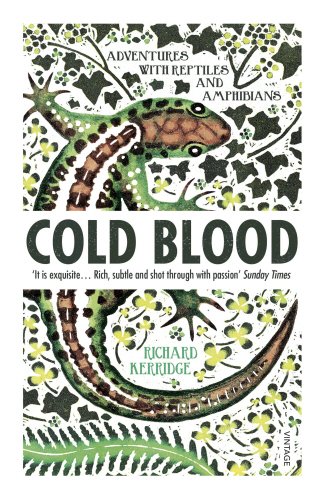
Cold Blood: Adventures with Reptiles and Amphibians
Amphibians have smooth moist skin. The toad is an exception with rough dry skin.
The majority of amphibians contain four limbs with no claws on their digits (toes).
They contain a three chambered heart. Two atria and one ventricle. There is a possibility of the oxygenated and unoxygenated blood mixing in the ventricle.
They are ectotherms. During extreme environmental conditions they either hibernate (winter) or aestivate (summer).
They carry on external fertilization. Their offspring develop through a process called metamorphosis. Tadpoles (aquatic larvae) resemble fish. Over a period of time they change in form into the adult amphibian.
They respire through poorly developed lungs and moist skin.
They contain a well developed muscular system.
The digestive system is adapted to digest whole prey, swallowed by the organism.
Two kidney’s rid the body of nitrogenous waste. The amphibian liver carries on several functions: detoxifying poisons, producing bile, and storing glucose in the form of glycogen.
The cloaca is a sac that collects discharge from the large intestine, urinary bladder, and gonads before it is eliminated from the body.
Their brain is well developed and is attached to a dorsal nerve cord.
Most amphibians contain three eye lids. Two are normal and one is transparent.
These are the first animals to possess a pressure releasing canal called the Eustachian tube. The tube connects the mouth cavity with the tympanic membrane.
Orders of Amphibia:
Order Apoda. This order contains amphibians without legs. Examples of this order are the caecilians. Most of these organisms live in the moist soil, while some tropical species live in ponds and streams.
Order Urodela. These are tailed amphibians. Included in this group are the salamanders and newts. These animals contain a tail and neck. Some of these organisms never develop lungs and must rely on external gills.
Order Anura. Frogs and toads represent these tailless organisms. Frogs use powerful hind legs for movement. Their long sticky tongue is attached to the tip of the lower jaw. They exhibit a variety of colorful skin, which is sometimes poisonous. Frogs live in many areas of the world. The male is the only one of the species that makes sounds.
5.Reptilian Class : Reptiles
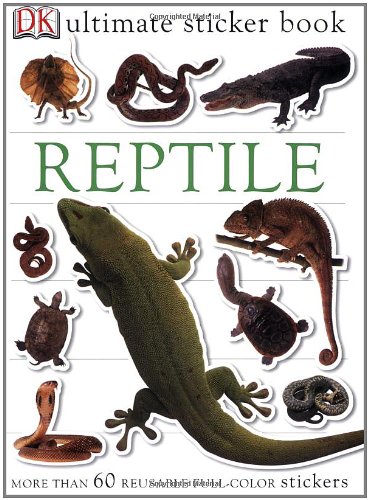
Reptile (DK Ultimate Sticker Books)
Reptilian Characteristics:
The development of the amniote egg. Reptiles are considered the first true land animals. It was this egg that allowed the reptiles to conquer the land and begin a reign that lasted hundreds of millions of years.
The amniote egg is a water proof structure composed of a shell, embryonic membranes, and the living embryo. Starting after the shell, the first extraembryonic membrane is the chorion.
The chorion aids in the exchange of gases between the environment and the embryo. The allantois is a sac-like structure that grows out of the digestive tract of the embryo. It functions in gas exchange and collects metabolic wastes from the embryo.
The third membrane is a fluid filled sac called the amnion. It surrounds the embryo and the fluid it secretes cushions the embryo.
The fourth and final membrane is the yolk sac. The sac contains the food for the embryo.
A thick dry skin covered with scales made of a protein called Keratin. Reptiles molt as they grow.
Reproduction is sexual with internal fertilization. Most are oviparous, while some snakes and lizards are either ovoviviparous or viviparous.
Respiration occurs through well developed lungs, and in some turtles a moist cloacal
Reptiles are ectotherms. Being ectothermic enables an organism to survive on much less food than an endothermic organism.
Most reptiles contain a 3 chambered heart with a partially divided ventricle. Crocodiles contain a 4 chambered heart.
Reptilian Orders
Order Chelonia. Turtles are members of this order. They developed from animals called anapsids during the Mesozoic era. They show very little change from their ancestral form. They contain 2 shells. The top shell is called the carapace, while the lower shell is called the plastron. Both shells are colored to help the turtle blend in with the 2 environments in which it lives. All turtles lay their eggs on land. Turtles do not contain teeth, but use a horny beak to grab and tear food. Turtles contain three eyelids.
Order Squamata. Lizards and snakes belong to this reptilian order. Lizards are the most abundant of this order. They evolved from the diapsid group of primitive organisms. They range in size from the large Komodo Dragon to the small tropical geckos.
Snakes are probably the most interesting species of this group. They probably developed from small burrowing lizards. They are void of legs, eyelids, and ears. They are carnivores swallowing their prey whole. Their glottis and gullet are at separate ends of the mouth cavity. This allows the snake to breathe when eating.
They contain 2 rows of teeth on the upper jaw and one row on the lower. The teeth are curved and pointed back toward the gullet. This keeps the food moving in one direction toward the stomach. The jaws are hinged in such a way as to separate allowing the mouth to open wider than usual when swallowing large prey.
Some species are venomous, either giving off a hemotoxin ( blood poison) or a neurotoxin ( nerve poison). The tongue is used in the sense of smell. Heat sensitive pits are a feature of some venomous snakes, these allows the snake to home in on the prey’s body heat.
Order Crocodilia. Crocodiles evolved from the diapsid. These organism are found in most of the warm regions of the world. They spend most of their time in the water. They contain a 4 chambered heart and are the closest living relative of the dinosaur.
6.Class Aves:Birds
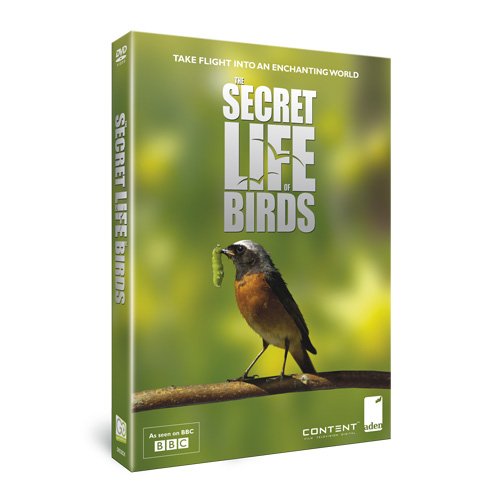
General Characteristics:
Birds are flight orientated organisms. Each part of its anatomy is modified in some way to allow it to keep its body light and energetic for flight.
Very active metabolism. They can eat, digest, and eliminate the waste in a short amount of time. Their body temperature is rather high 102-103 degrees F. They are endotherms.
They contain a four chambered heart.
Their skeleton is constructed of light weight bones supported by an inner meshwork of bony material to give extra support while flying.
The female loses one of its ovaries.
They have no teeth and their beak is made of a light protein keratin.
They contain feathers, also made of keratin. There are three types of feathers: down feathers which are used for insulation, contour feathers which are colorful and used for recognition, and keeping the body aerodynamic, and quill feathers which are used for flight . These feathers are lost periodically (molting).
They have an extensive air sac system attached to the lungs. This reduces the weight of the bird and supplies the needed air for a fast metabolism. It also is used to dissipate the tremendous amount of heat built up from metabolism.
They develop from the amniote egg. Bird egg shells are hardened with calcium carbonate for added protection.
Birds that are ready to carry on life’s duties upon hatching are called precotial, while those that need further development are called altricial.
They have a well developed nervous system. Acute vision, and external ears.
Well developed muscles. The keel ,a part of the sternum, allows large pectoral muscles to be attached to the skeleton.
Their forelimbs are modifies as wings. These wings are homologous to the limbs of the reptiles, amphibians, and mammals.
Their hind limbs are modified for various jobs based on the structure of their claws.
Birds are an excellent indicator of the fitness of the environment. They help keep the insect population down, use rodents as a food source, help rid the environment of dead and decaying organic material, and help pollinate many types of plants.
Many birds migrate over long distances to find suitable breeding grounds and protection from major climatic changes.
7.Class Mammalia:Mammals
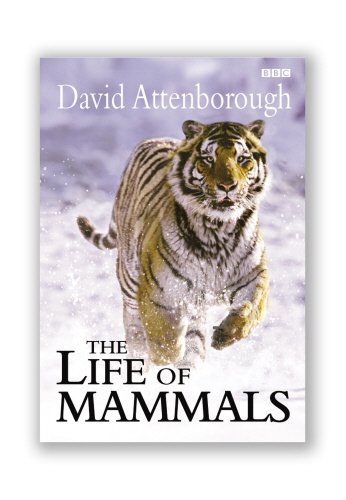
General Mammalian Characteristics:
Possess hair which is made of keratin. The evolution of mammalian keratin is believed to be independent of reptilian keratin. Hair provides insulation .
The majority of the heat energy is used to maintain their high body temperature.
4 chambered heart.
Mammary glands are used to produce milk to nourish their young. Female glands are the only functional glands.
The diaphragm is a muscle that separates the thoracic cavity from the abdominal cavity.
7 cervical vertebrae (neck bones) are present in most mammals.
Most are viviparous though some are oviparous. An extended gestation period (uterine development) is common in most placental mammals.
Teeth are imbedded in the jaw bone and come in a variety of forms.
Well developed brain.
Mammals developed from the therapsid ancestors during the Triassic period.
Major Groups of Mammals:
Monotremes. Characterized by the duckbilled platypus and the spiny anteaters, lay eggs and maintain some reptilian characteristics. They do not contain true mammary glands, but produce a fatty sweat (milk) from glands in the skin. The milk collects and drips down tufts of hair into the offspring’s mouth. They are found in Australia and New Guinea.
Marsupials. These mammals contain a pouch (marsupium). Opossums,koalas,kangaroos, and other examples live in Australia as a result of the break up of the super continent Pangea. The young are born during the early stages of development. The new born crawls up to the mother’s pouch, where it clings on to a nipple and hangs there until it fully develops.
Placental Mammals. These mammals are the most abundant and diverse of the class. The placenta, a reproductive structure, is housed in the uterus of the female. Here the offspring receives all that it needs to develop into a fully developed organism. This period of development (gestation) varies with the species of mammal. Whales gestate for 2 years, while a mouse develops in 21 days.
In general, people feel a strong affinity toward vertebrates. Although invertebrates greatly outnumber vertebrates, it is overwhelmingly vertebrates that are kept as pets or in aquariums and terrariums, as well as being featured in movies, animated films, and other media.
Communities pass laws relating to the humane treatment of vertebrates, and they build zoos for their display. The more similar the class of vertebrates is to humans, generally the more the apparent attraction and the more laws for their protection—as seen in the special attention shown to birds and especially mammals, versus fish, amphibians, and reptiles.
Invertebrate Animals
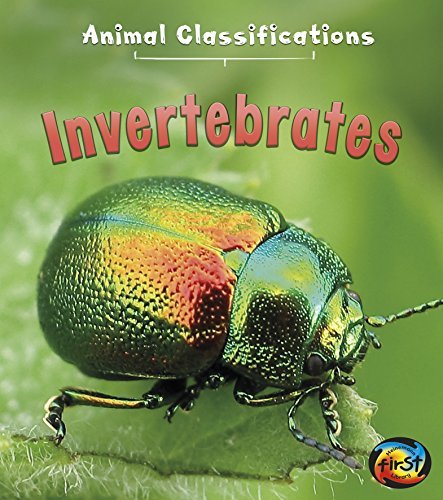
Invertebrates (Animal Classification) by Angela Royston (2015-01-06)
Invertebrates includes every animal that doesn’t belong to vertebrates group.
They don’t have a vertebral column or spinal cord or backbone.
This simple definition hides the tremendous diversity found within this group which includes protozoa (single-celled animals), corals, sponges, sea urchins, starfish, sand dollars, worms, snails, clams, spiders, crabs, and insects.
In fact, more than 98 percent of the nearly two million described species are invertebrates.
Animal Habitats
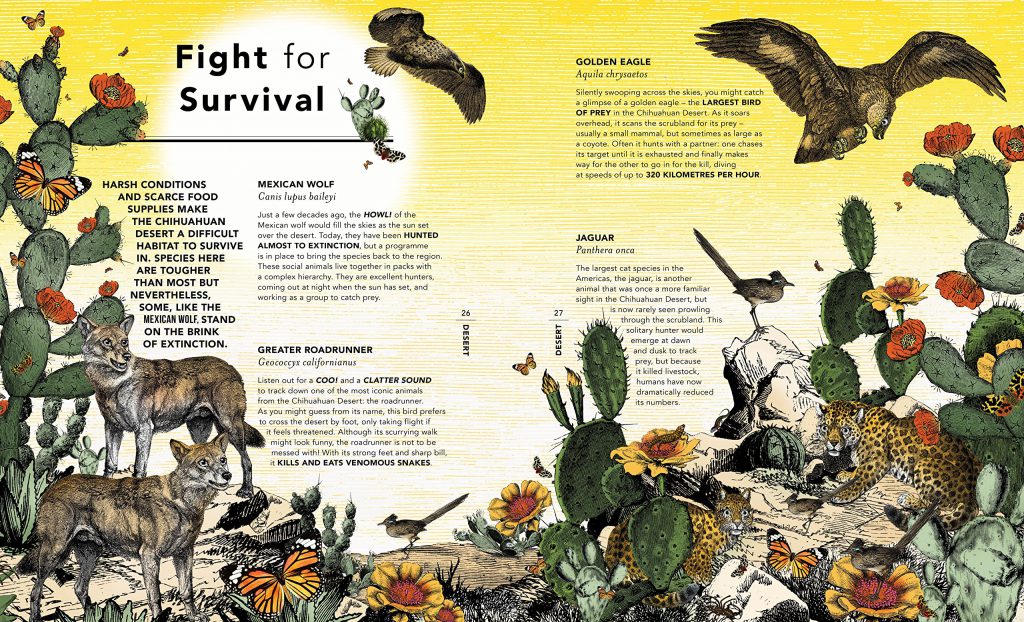
Habitat is a word taken from Latin that means ‘it inhabits’. It is an area that is not defined by a specific size, but that has a particular balance of environmental factors that make it suitable for specific living organisms to live in it. When an animal lives in its natural habitat, their surroundings help it live, eat, grow and survive.
Therefore, to effectively ensure the long-term survival of any animal species , you must also ensure the protection of its habitat, especially those areas within its habitat which are of critical importance to its survival; such as mating, feeding or birthing grounds. Protecting habitats to safeguard a specific species also helps to ensure the protection of all the other species within that habitat which also depend upon it for survival.
If you have any information,questions, or feedback you would like to include in this webpage.
Please email momo19@naturekingdoms.com or leave your comments below.
